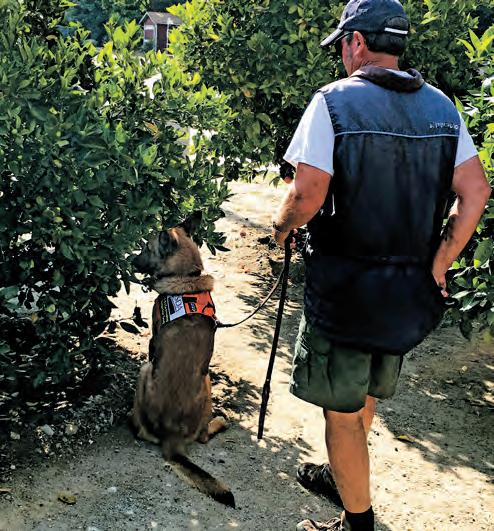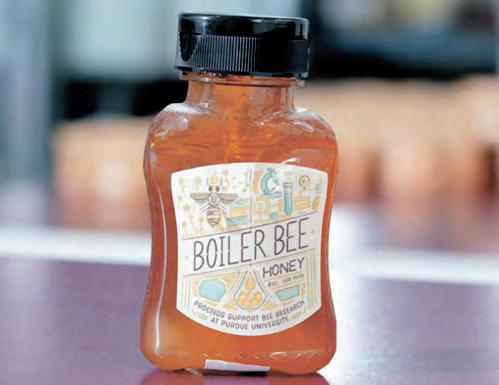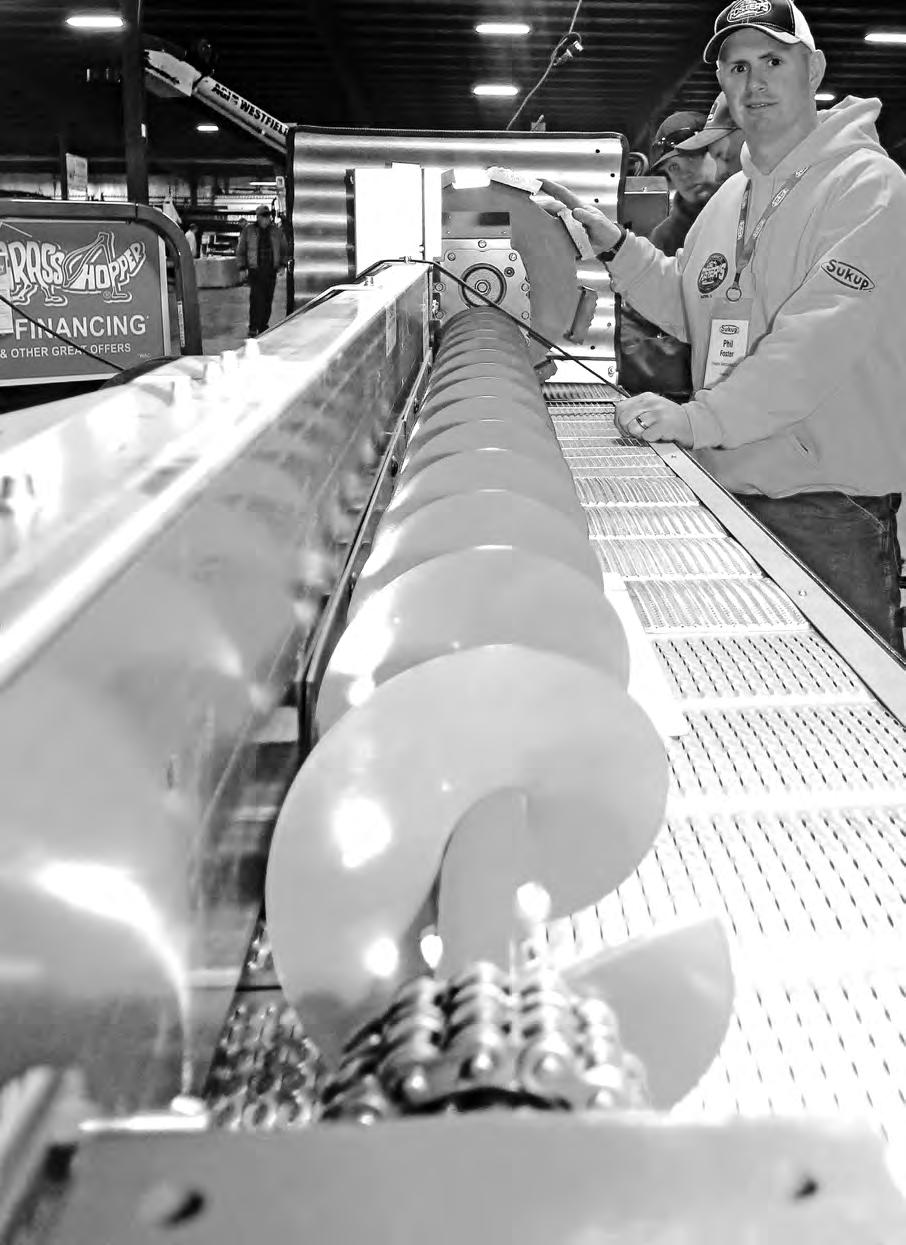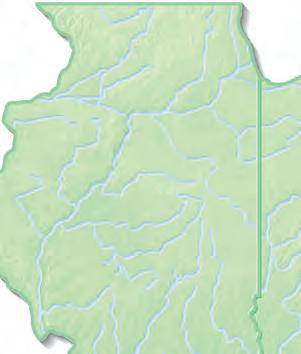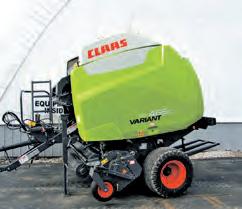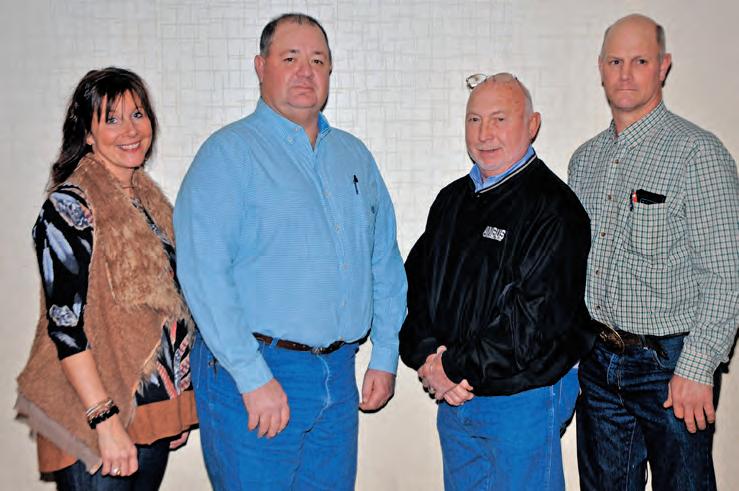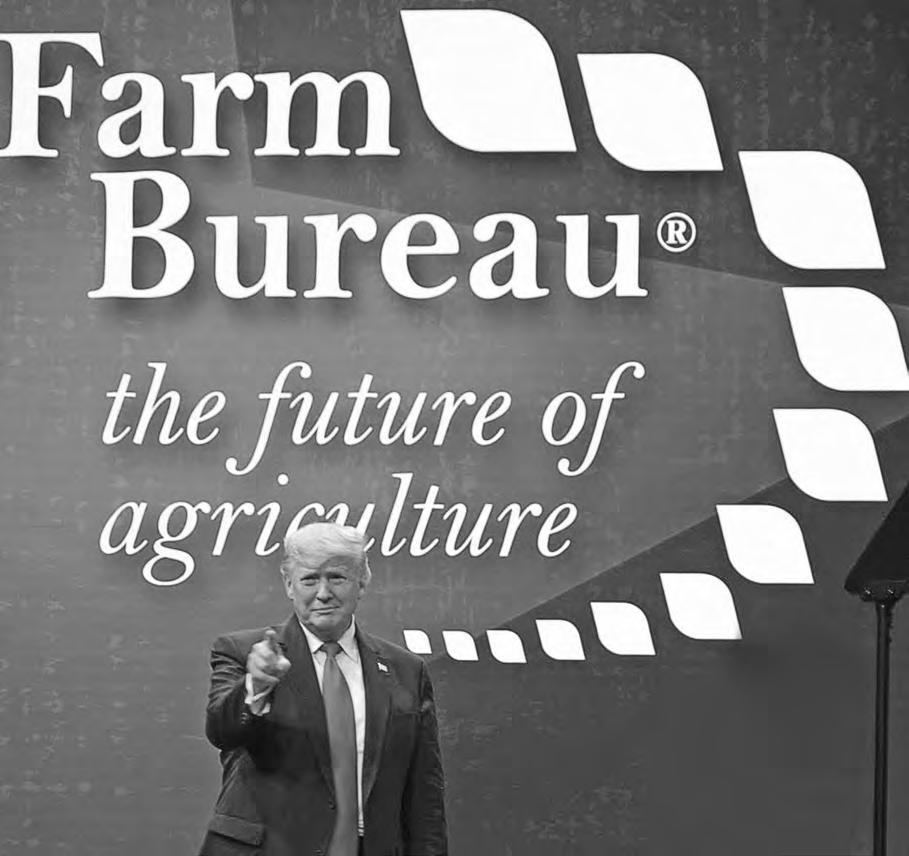February 14, 2020
Health coverage advances ,1)% EHQHŎWV SODQ FOHDUV KXUGOH By James Henry AGRINEWS PUBLICATIONS
NOBLESVILLE, Ind. — Legislation that would let Indiana Farm Bureau offer an affordable health care alternative took another step for ward, but will still require farmers’ vocal support to cross the finish line. Senate Bill 184 would allow INFB to offer a non-insurance, high quality and more affordable health benefit plan to its members — specifically those who are sole proprietors with fewer than two employees. A fter advancing 8- 0 from the Senate Committee on Insurance and Financial Institutions, it passed the f ull Senate with a 49- 0 vote on Feb. 4 and has been referred to the House, where it will now be considered. INFB President Randy Kron told AgriNews at the Young Farmers and Ag Professionals Conference in Noblesville that he was pleasantly surprised by the senators’ unanimous approval. “I give a lot of credit to our members, the grassroots showing up at the hearing. We had the room full of people, 50 people probably fit in there, and there were close to that many out in the hallway. So, farmers have showed up,” he said. See HEALTH, Page A2
Survey says… In an Indiana Farm Bureau Poll/ Bellwether Research survey, Hoosier farmers said healthcare costs is the top concern they face. Many Farm Bureau members go without coverage. of respondents said the cost of health care is important to the profitability of their business. under the age of 65 said they have chosen to not get treatment for a health condition because of the cost.
78%
43%
SEE SECTION B
INSIDE
Favorable outlook for fruit growers A3 IBCA elects new area directors to board A8 Get in the spirit on Distillery Trail B4 AgriTrucker B7
Classifieds B5
Alan Guebert B8
Farms For Sale B5
Auction Calendar B1
Lifestyle B3
Business B9
Livestock A8
Calendar B2
Opinion B8
Vol. 42 No. 20
CONTACT AGRINEWS: 800-426-9438
www.agrinews-pubs.com
Opioids a rural epidemic
From trade progress to regulatory reforms, President Donald Trump tells the American Farm Bureau Federation how he has made agricultural issues a priority.
‘We did it’ Overdoses in Indiana have increased 22.5% By James Henry AGRINEWS PUBLICATIONS
NOBLESVILLE, Ind. — The man picked up a hammer and then smashed it down on his hand. The woman unbuckled her seatbelt and then drove her car at full throttle into a dumpster. They hurt themselves with the sole intent of acquiring prescription pain medications. These true stories shared by Matt Niswander at the Young Farmers and Ag Professionals Conference in Noblesville depict just how devastating the opioid epidemic in rural America has become. Niswander is a first-generation cattleman. He and his wife, Colbie, and their three children raise Black Angus cattle at Niswander Farms, a U.S. Department of Agriculturecertified direct-to-consumer beef cattle farm. He previously worked in emergency medicine and now works full-time in his community as a family nurse practitioner, the owner of Niswander Family Medicine, a hometown, primary care family medical practice in Lawrenceburg, Tennessee. The very first appointment on the first day he opened his clinic, the patient asked for narcotics, Niswander recalled. “That was an instant wakeup call for me. I had to address that from a moral and ethical standpoint, but also from a business standpoint,” he said. “I didn’t do anything for him. He got mad. That’s typically how that works out.” There is no difference between prescription opioids obtained legally from a doctor and heroin obtained illegally, Niswander said. “Actually, heroin and opiate have the exact same reaction chemically in your body as each other,” he said. “You picture a heroin addict in your head and think of a drug addict on the street corner with a needle hanging out his arm. When you think of somebody addicted to pain pills, we don’t have that same image, for some reason. It is literally the same exact thing. It literally does the same thing to your body.”
AGRINEWS PHOTO/JAMES HENRY
If you think you are immune to the possibility of addiction, you’re wrong, warns Matt Niswander, a farmer and family nurse practitioner, at the Young Farmers and Ag Professionals Conference in Noblesville.
What are opioids? Opioid is a term used for the entire family of opiate drugs, including natural, synthetic and semi-synthetic. These drugs are chemically related and interact with opioid receptors on nerve cells in the body and brain, creating a feeling of euphoria. Opioid drugs include: Buprenorphine Codeine Fentanyl Heroin Hydrocodone
Hydromorphone Meperidine Methadone Morphine Oxycodone
A COUNTRY IN CRISIS This is not just a “big-city” problem, Niswander stressed. In fact, he said, more adults are dying from opioid overdoses in rural America, at a rate of 10.8 deaths per 100,000 people, greater than the national average of 10.6. In 2018, 130 Americans died every day from an opioid overdose. “If you loaded two jumbo
jets full of people and crashed it into the ground every single week, that’s how many people die because of opioids every week in this country,” Niswander said. “If two planes crashed out of the sky right now, what would the federal government do? They’d shut the airline business down. Everybody in the United States would be up in arms about it. “It’s happening. It’s been happening, for decades. And nothing is being done, to that extent.” Deaths caused by opioids now exceed deaths caused by diabetes and are getting closer to cancer and heart disease, Niswander said. Specifically in Indiana, he said, opioid overdoses have increased 22.5%. For every 100,000 people, about 30 people have died — far greater than the national average of 19, he said. Looking at how often opioids are being prescribed by physicians in Indiana, Niswander said there were 74.2 opioid prescriptions per 100 people — again far greater than the national average of 58.7. Only nine states prescribe opioids more than Indiana, he said.
7UXPS FHOHEUDWHV WUDGH DJUHHPHQWV DW $)%) PHHWLQJ By Jeannine Otto AGRINEWS PUBLICATIONS
AUSTIN, Texas — He might have exited the stage, as he has before, to the strains of “You Can’t Always Get What You Want” by the Rolling Stones, but President Donald Trump was able to take a victory lap for some promises kept to U.S. farmers and ranchers. “We did it. We did it,” Trump celebrated with the opening words of his address to members of the American Farm Bureau Federation at its annual meeting in Austin.
“I’ve told everybody you’ve got to buy a lot of land and you’ve got to get bigger tractors now because we did a great deal with China, great for our country. We’re going to sell them the greatest product you’ve ever seen.” President Donald Trump
HOW’D WE GET HERE? In 1996, OxyContin was marketed as a “cure-all,” a non-addictive medication with an abuse-deterrent coating for first-line treatment of any kind of pain, not just severe pain from cancer or broken bones, Niswander said. “They had this huge marketing push, all this research to back it up. Pharmaceutical companies back then could take doctors and nurse practitioners and nurses to the Bahamas, or to the Pacers game, or the Tennessee Titans game. You feel like you owe these people something. I had a friend, they took him duck hunting and gave him a shotgun,” he said. “Then in the early 2000s — I don’t want to get conspiracy theory on you too much, but you’ll hear it in my voice maybe – the pain scale shows up as the sixth vital sign.
Trump was able to celebrate not only the completion of Phase 1 of a trade deal with China, but the passage by the House and Senate of the U.S.-MexicoCanada Agreement, which replaces the North American Free Trade Agreement. “I’ve told everybody you’ve got to buy a lot of land and you’ve got to get bigger tractors now because we did a great deal with China, great for our country. We’re going to sell them the greatest product you’ve ever seen,” Trump said. The president would sign the USMCA into law after he spoke to the gathered Farm Bureau members, but he pointed out the benefits for the nation’s ag producers. “It will massively boost exports for farmers, ranchers, growers and agricultural producers from north to south and from sea to shining sea. It also has tremendous impacts on manufacturers and all of the other things good for everybody,” he said. Trump reminded the audience of the trade aid program, the Market Facilitation Program, that has resulted in $28 billion being distributed to farmers and ranchers impacted by tariffs on U.S. agricultural products going into China.
See OPIOIDS, Page A4
See TRUMP, Page A4





